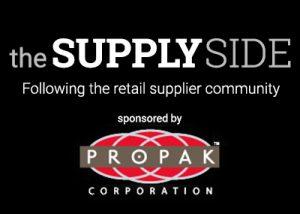The Supply Side: Internet of things growth in grocery is underway
by October 12, 2017 12:57 pm 500 views

The future is here in terms of interconnected “smart” devices, also dubbed the internet of things (IoT). While proliferation of the technology is not mainstream among grocery and food companies, more companies are piloting and deploying IoT, according to new reports from research organizations IGD and Nielsen.
Research from IGD indicated 37% of food and grocery companies are piloting, or have already begun using, IoT applications or products within their operations. Additionally 58% said they plan to increase their use of technology providers to better embrace IoT opportunities.
“A new age of retailing is emerging — a digital, connected and personalized age, shaped by technology and the consumer,” noted Chris Irish, supply chain insight manager at IGD. “An IoT-enabled food and grocery supply chain helps bring this about through live, precise, consumer and product level insight enabling efficient, responsive solutions that meet needs and create value throughout the chain.”
The IGD research polled 84 food and grocery businesses across the globe with respect to IoT applications. A majority of the respondents (61%) said “improved understanding of customers” was one of the top three benefits of IoT, with 53% of companies citing “reduced costs and increased efficiencies.” Half the respondent saying IoT fosters the “development of new business model,” the report notes.
Nielsen’s research indicates consumers are ready to embrace more IoT possibilities in their shopping experiences. Nielsen found 63% of survey respondents are willing to download a retailer app or loyalty application, 65% are willing to use self-checkout, 66% are willing to access store Wi-Fi to receive information or promotional offers and 70% are willing to use handheld scanners as they shop.
IOT EVOLUTION
IGD made several predictions about the evolution of IoT in the food and grocery sector.

At the top of the predictions, Irish said IoT will increase opportunities for product and service personalization, and help fuel growing expectations. A separate report by Nielsen found a wide spectrum of IoT involvement among grocery retailers. The report cites opportunities for personalization in grocery as retailers explore connected technology to adapt to individual shopping experiences in real time.
Nielsen said beacons, digital signage, price tickers and on-shelf displays give brands potential access to huge amounts of data on customer activity during a grocery shopping trip. For instance, IoT can be used to track in-store movement, provide promotion exposure interact with consumers via apps that help enhance the shopping experience. Like IGD, Nielsen’s research indicates opportunities for retailers to personalize shopping experiences. For example, retailers could suggest complementary products, help with aisle and promotion location and automatically apply relevant offers to increase saving time and saving money.
On the back-end of the retail business, Irish expects IoT to improve product distribution by increasing visibility — the ability to see items in real time within the supply chain. He said this improved visibility should foster collaboration and help to break down information silos that now exist in the supply chain. Irish said IoT will accelerate automation and artificial intelligence and drive efficiencies while also changing the capabilities and resources needed in supply chains. He said IoT provides the “eyes and ears” for many other transformational technologies that will be able to leverage the wealth of information automatically acquired.
“IoT will radically change the traditional business approach to forecasting by bringing businesses more accurate data to work with from live consumer feedback using product sensors,” Irish wrote in the report.
He also expected IoT will allow forecasting to be predicted from individual consumer demand by responding to and shaping real-time events with direct visibility of impact. He doesn’t foresee privacy concerns being a major barrier to IoT expansion because consumers are growing more accustomed to sharing information when benefits are connected.
The IGD report indicates consumers won’t want to pay more for existing products to be enabled by IoT. Irish said retailers and suppliers will need to find other ways to create value for themselves from the data generated.
IOT ADOPTION
Irish doesn’t expect IoT innovation to change the grocery industry overnight, but said as applications steadily increase there will be a transformational change.
In early 2016, Kroger began using IoT in its grocery stores to check temperatures in freezers every 30 minutes. Kroger said using IoT sensors eliminated the need for humans to manually check the temps twice daily and risk the mercury falling to unsafe levels.
The new Amazon Go concept store in Seattle uses IoT in its smart-shelf application that automatically adds an item to an online shopping cart once it’s pulled from the shelf. If the item is put back, then it’s subtracted from the cart.
Earlier this year Wal-Mart said it was investigating using IoT to develop a new way to track products in consumers’ homes and help consumers when it comes to replenishing needed products.
–––––––––––––––––––
Editor’s note: The Supply Side section of Talk Business & Politics focuses on the companies, organizations, issues and individuals engaged in providing products and services to retailers. The Supply Side is managed by Talk Business & Politics and sponsored by Propak Logistics.
